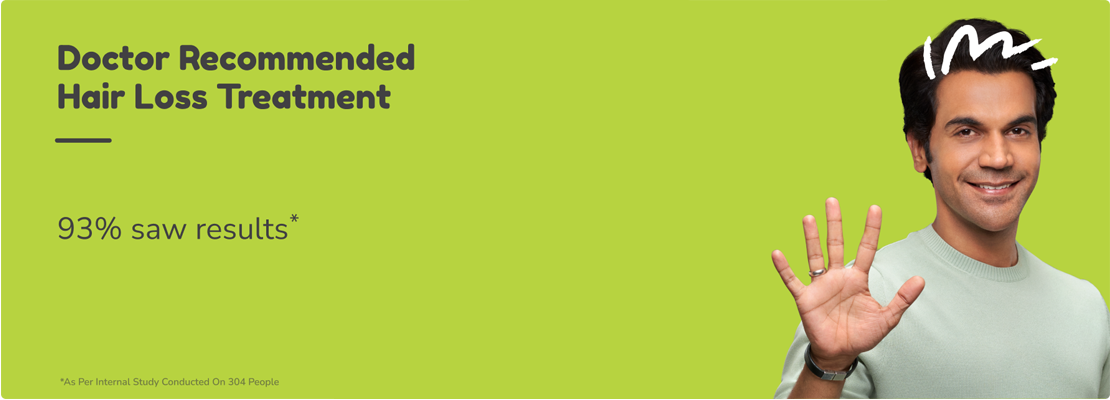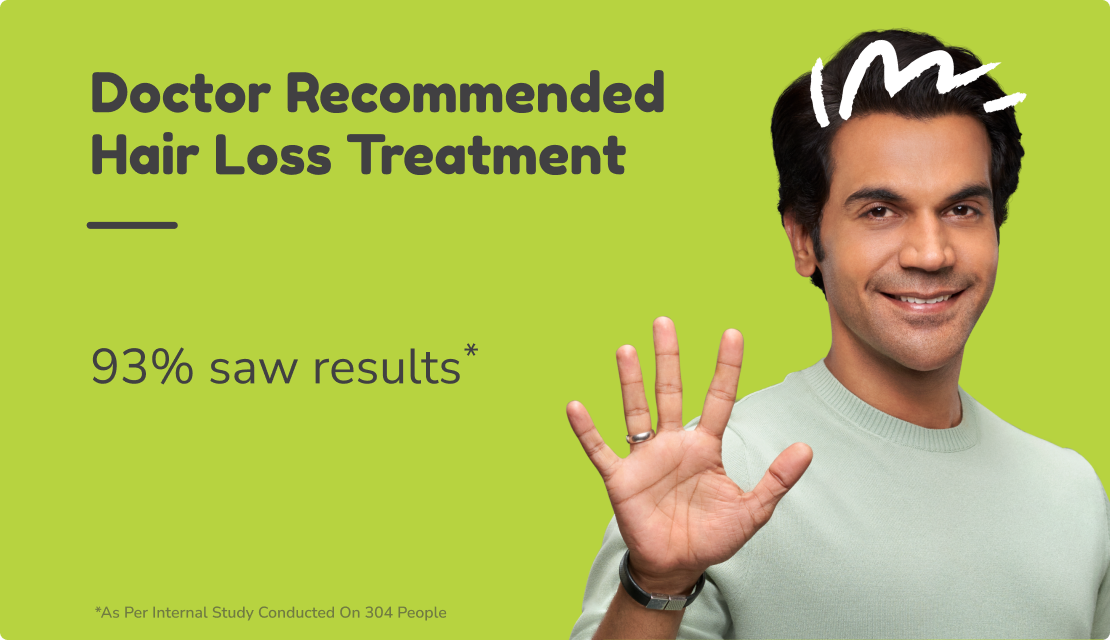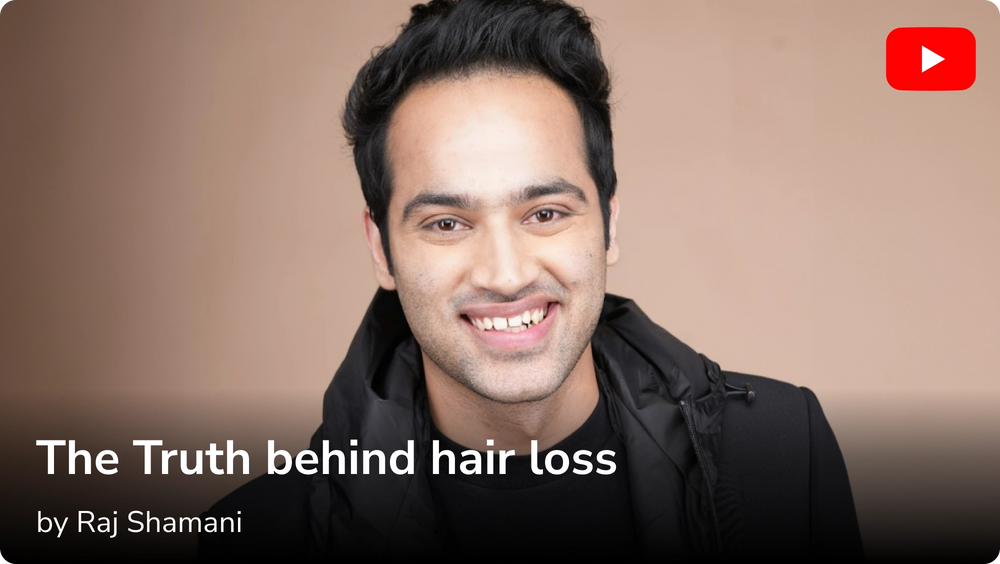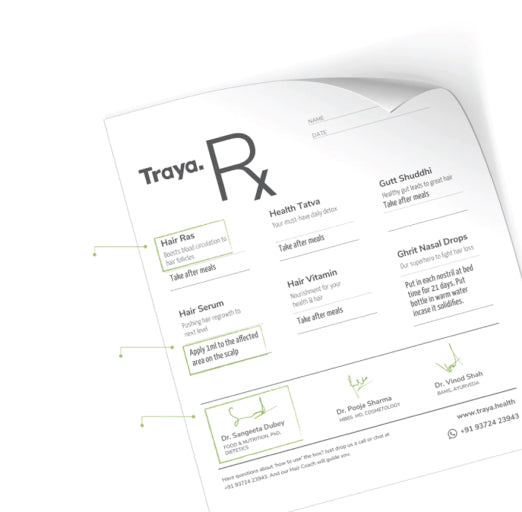Ever since the ‘Will Smith - Chris Rock’ incident at the Oscars, the terms hair fall and hair care have become the talk of the town. Flaunting your tresses by simply running your fingers through it, is something we all do pretty often… but have we ever tried to dig deeper and find out what our hair actually looks like? Now that we do so much to pamper our hair and hairstyle, it only serves right to dedicate some amount of spotlight to something called hair follicles.
What Is A Hair Follicle?
You are born with over 5 million hair follicles over your entire body while approximate 100,000 follicles are present on your scalp. But what exactly are these hair follicles? Let’s break it down for you. Hair is divided into 2 parts - the hair follicle and the hair shaft. The shaft is what is visible above the scalp and the hair follicle - below. Truth be told, the follicles are the ones that anchor the hair to your scalp.
Now, as the name suggests, a hair follicle basically helps to grow hair. These are one of the few parts of your body that can literally die and begin to function again, in scientific terms, it’s called regeneration. This entire process brings about growth and regrowth of hair over your entire body.
Why Are Hair Follicles So Important?
You might be wondering, why all this sudden gyan about hair follicles? Well, they have an important role to play especially as part of the body’s ‘first line of defence’ when there’s an injury or wound to the skin. Apart from promoting regular hair follicle regrowth, they are also involved in the formation of new blood vessels and neuron cells. Hair follicles give your hair its natural color as the amount of melanin present in the hair follicles determines the color of your hair. Lastly, the shape of your hair also comes from your hair follicles - if the hair follicles are circular, they make hair look straight; while oval-shaped follicles make hair look curly.
What Does A Hair Follicle Look Like?
As per the anatomy of hair, hair follicles look cylindrical in shape and begin at the surface or outer layer of the skin a.k.a the epidermis. Hair growth is said to start off from the bottom portion of this hair follicle structure. Surrounding the hair follicles, you have sebum or natural oils in the scalp that keep both the hair and scalp lubricated. The hair follicle structure contains the following parts:
- The Bulb: A circular ending at the bottom, this is also known as the hair root. It contains hair protein keratin which is required for ideal hair growth.
- The Papilla: The dermal papilla contains capillaries that supply blood for healthy follicle growth. This is also the part where the regeneration of new hair growth takes place. These cells play a key role in the hair cycle and hair formation.
- Follicular Matrix & Bulge: The matrix contains both melanin cells and keratin cells that promote natural hair color and hair shaft growth respectively. The bulge is said to have muscle tissues that usually cause hair to stand erect at times when you experience a ‘goose-bump’.
Lifecycle Of A Single Hair Follicle
Now, hair grows from these follicles in a cycle of 4 phases. The growth phase, the Transition phase, the resting phase and finally the shedding phase. Since this is a cycle, the growth phase re-continues post the shedding phase. In simpler terms, the old hair that has fallen out is eventually replaced by new healthy hair growth. Let’s look at each individual phase to make it less complicated.
- Growth Phase: About 90% of the hair on the scalp is in the active growth phase of the hair cycle. In this phase, the hair acquires all the necessary nutrients from the blood supply with the help of the dermal papilla region of the follicle for it to actively grow. In a month, a hair strand is said to grow 1 cm in length. This entire phase lasts between 4-7 years.
- Transition Phase: Hair now starts to transition from an actively growing phase to a resting phase. Here is when hair detaches from the follicle and the blood supply is cut off. This phase is considered the shortest of all phases as it lasts anywhere between 3-4 months.
- Resting Phase: 8-10% of the hair on the scalp falls under this phase. After it has been detached from the follicle in the last phase, it is literally just hanging on the head and waiting for an external factor as simple as combing your hair for it to fall off.
- Shedding Phase: Here the hair falls off completely from the follicle. However, the follicle is still not empty. By this time, hair follicle regrowth takes place when a new hair begins to actively regrow in the same follicle where the previous strand fell off. This is why in ideal conditions, you always have a head full of hair.
What Hampers Hair Follicle Growth?
There could be several factors that affect the growth of hair follicles. And by simply catering to these factors, you can re-work your hair follicle growth. However, if you are someone who is suffering from severe hair loss, you should take Traya’s free hair test to get a doctor-prescribed and customized solution for your hair condition. Let’s look at a few common factors that hamper hair follicle growth.
- Stress: Any kind of event that puts stress on your body can affect hair follicular growth. Be it Covid, pregnancy/post pregnancy, dengue/malaria, surgery, the loss of a loved one or even day-to-day stressors could be the culprit behind improper hair growth. This leads to hair follicle thinning which makes hair thinner in every cycle where it eventually falls off. This type of hair fall can be easily managed with proper care.
- Hormonal Imbalance: Underlying health issues like PCOS, Thyroid or even stress and irregular sleeping patterns for that matter cause an imbalance in the ideal hormonal levels like Cortisol, Melatonin, and androgens that is all required for the hair cycle to function on a regular manner. This hampers hair follicle function and regrowth.
- Indigestion: Many of you might not know this but indigestion too plays a huge role in the growth and development of hair and its structure. If what you eat itself isn’t getting broken down in the way that it should or isn’t being digested the right way, then how will the required amount of nutrients through the blood supply reach the hair follicles for growth?
- Gut Imbalance: The bacteria in your gut are very potent in determining the health of the hair follicles. The balance in the levels of gut bacteria helps to break down food into use macro and micronutrients such as biotin which is crucial for hair follicles to grow.
While these factors affect hair follicle growth, other conditions like the use of dyes/colors on the hair, effects of pollution, hard water, UV rays and chemical shampoos tend to affect the structure of the hair and the follicle thereby causing hair damage.
Side note: Now that you know that hair grows from the bottom layer of the hair follicle that is present inside the scalp, so anyone who tells you to trim your hair to get better hair growth and length, be sure enough to tell them it is a false notion.
Takeaway:
Since you have read the entire blog, you might have some doubts about your own follicle health. Here’s a simple test you can do called the pull test where you simply hold all your hair together in your hand and tug it to see if any strands fall off from time to time. If there’s anything between 50-100 strands, then this is considered a normal hair fall and your follicles are healthy. These were the strands in the rest/shedding phase of the hair cycle (This can also be done by a simple comb test). But anything more than this number is considered hair loss and needs to be treated.
FAQs
How To Stimulate Hair Follicles For Hair Growth?
Hair follicles required nutrient-rich blood flow for them to grow. Apart from eating a well-balanced diet, you can also massage your hair every once in a while with or without oil to improve the blood circulation to the scalp thereby stimulating the hair follicles.
How To Make Hair Follicles Strong?
If your internal health is in its prime then you have nothing to be worried about. To make hair follicles strong, you have to reduce stress levels, take into account your gut and digestive health and lastly keep a check on any kind of nutrient deficiencies.
Sources:






































